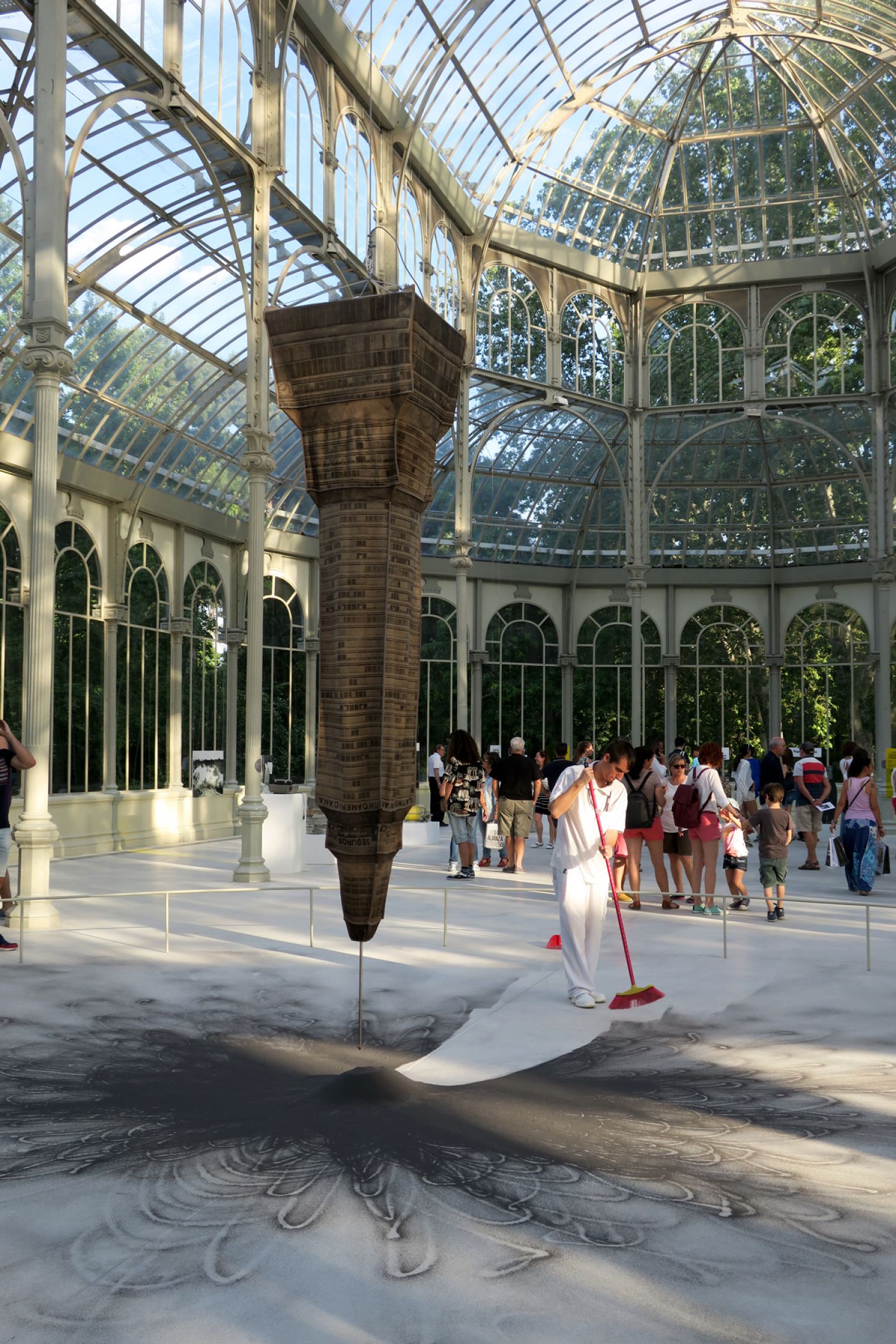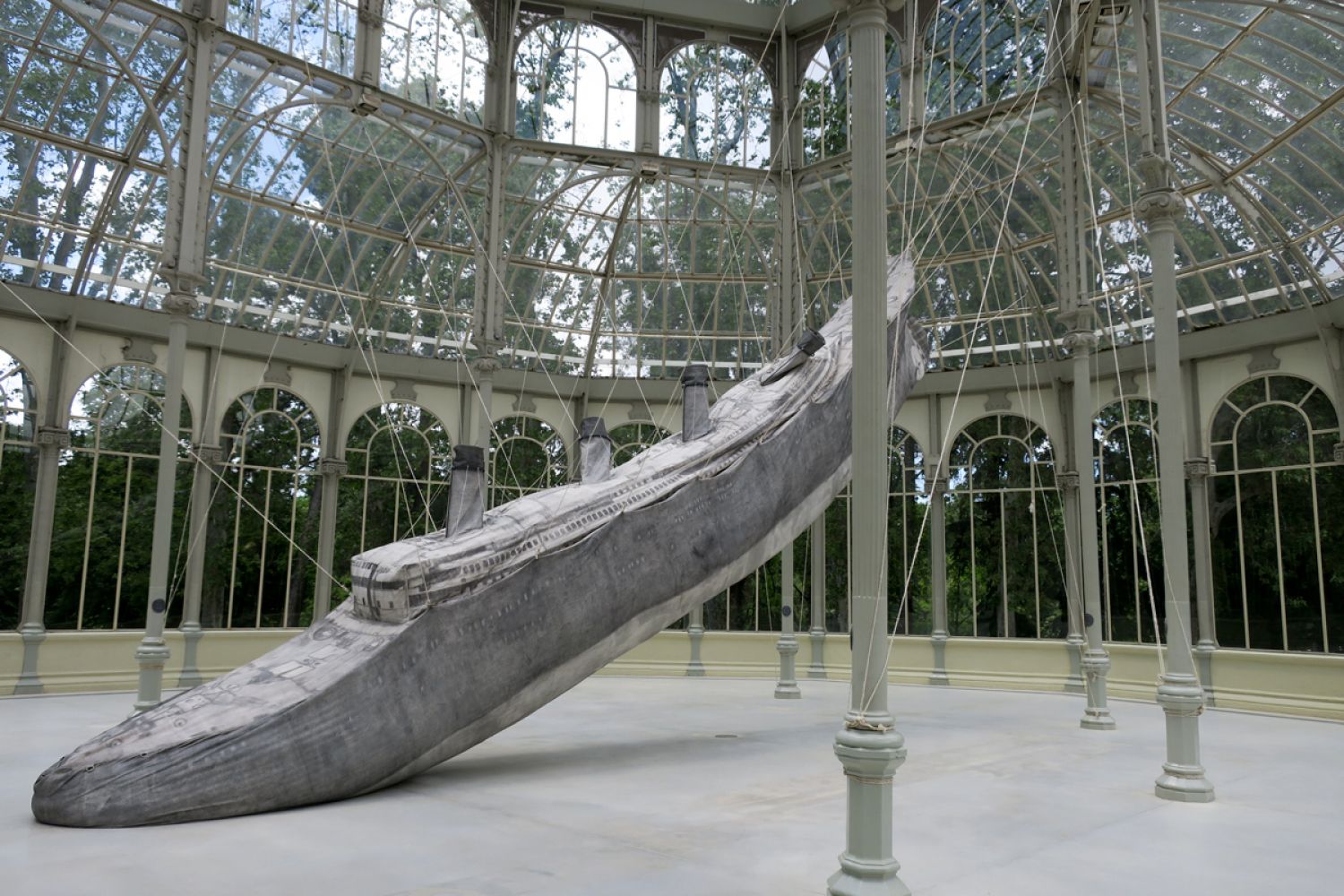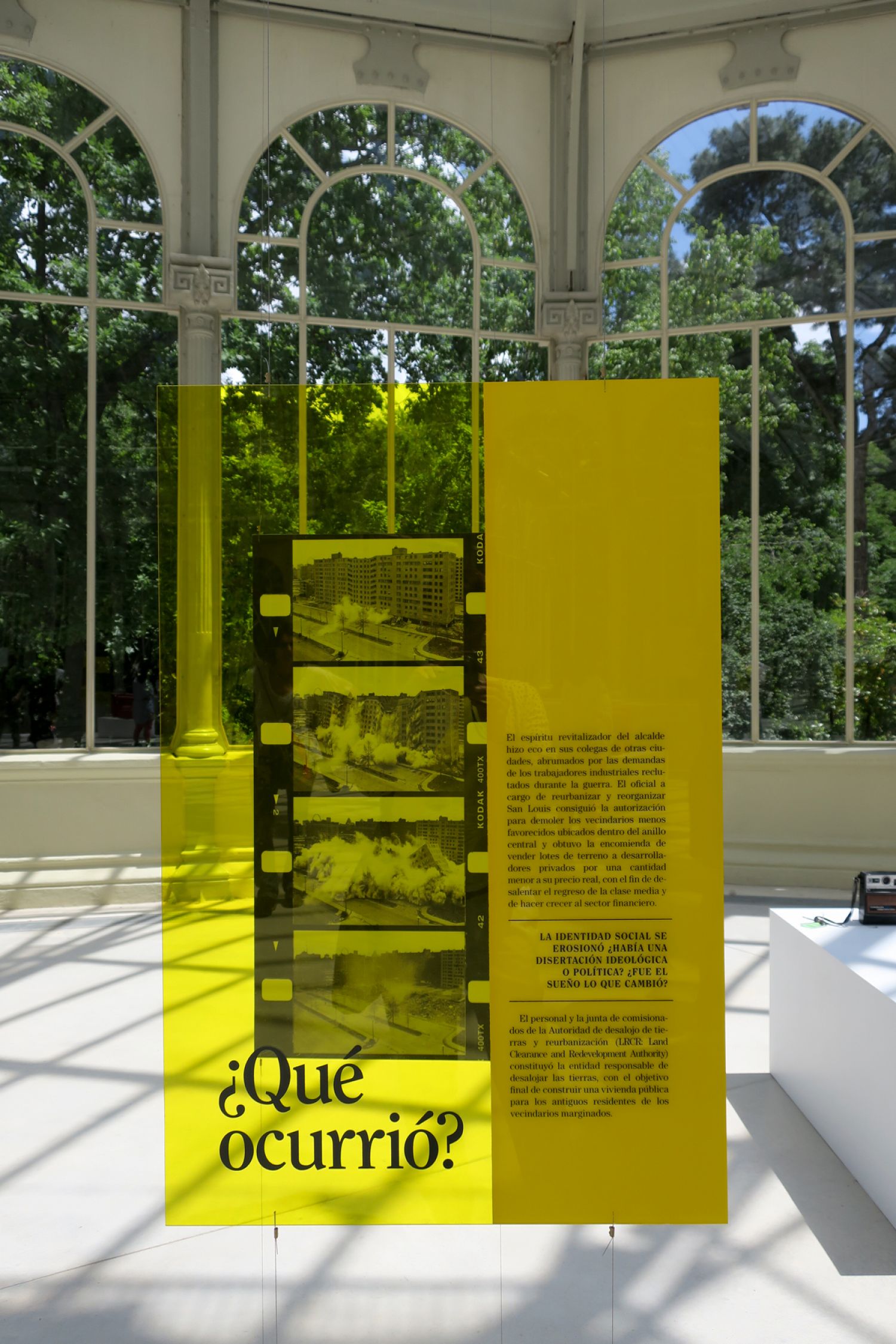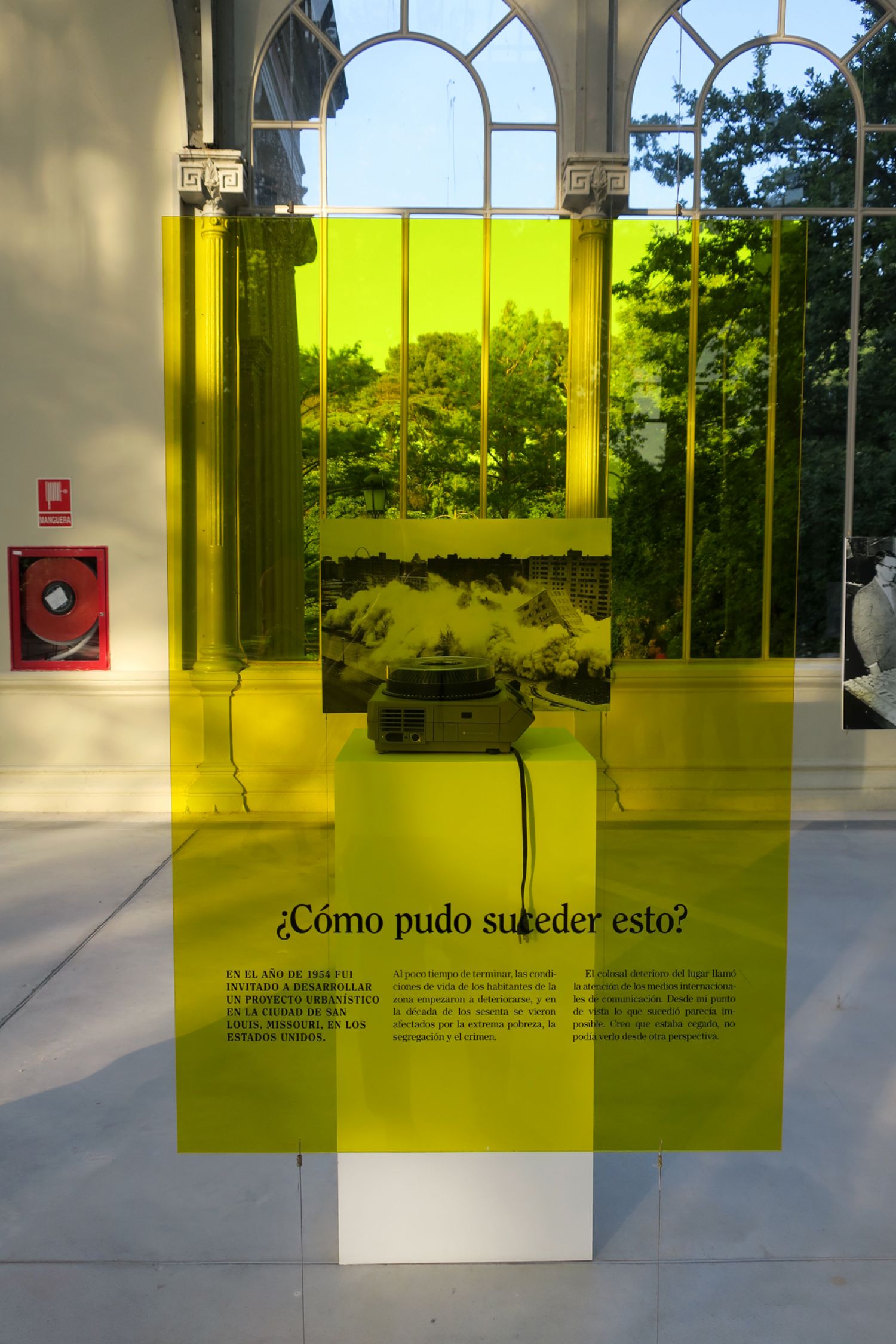The zero point
Sandra Vieira Jürgens
Located in the center of the Palacio de Cristal, Torre Latinoamericana is the zero point and the centerpiece of Damián Ortega's solo exhibition, El cohete y el abismo (The Rocket and the Abyss), consisting of three parts, where architectural and urban models are exposed through various references, allusions and analogies to projects and modern paradigms that erupted and failed in the 20th century. All of them are monumental, symbols of technological and economic progress, in some cases designed to survive the systemic impacts. In the present scenario of global vulnerability and uncertainty, a space for interpretation is opened on time, the weight and gravity, tension and resistance, the systems’ balances and oscillations.
With a soft sculpture installed in a steel cable suspended from the highest point of the dome of the Palacio de Cristal, the par excellence architectural model reproduced and multiplied in the Western world in the 19th century, the Torre Latinoamericana (Latin America Tower) is in turn the revisitation of an exemplary model of modern Mexican architecture and engineering of the 20th century, the Latin Tower, designed by Augusto H. Álvarez between 1949 and 1956, in the image of the Empire State Building (New York, 1930-1931).
Built as a miniature version of the latter, for many years the highest in the city with an anti-seismic system, Damián Ortega transforms his inverted tower into a pendulum and a sand timer, whose deposit releases grains of sand that, the pendulum motion, draw unpredictable trajectories on the floor. At the end of the day, an employee collects the sand scattered on the ground, sifts and stores it in the reservoir, beginning a new cycle every morning as in a work that repeats indefinitely.

In Monumento (Monument), suspension gives way not to balance but to fall, maintaining however the material’s flexibility, in this case a 13-metre canvas sculpture sinking in a small area of sand in the soil, in the image of the wreck of the Titanic and ironically referring to Claes Oldenburg’s flexible large sculptures and his projects and structures of colossal scale, which he defined as ‘realistic-fantastic proposals’, idealized jointly with his wife, Coosje van Bruggen, from objects of common use.

Crucial to counteract the verticality of the previous pieces with a sense of horizontality and a more diffused integration in space is Los pensamientos de Yamasaki (The Thoughts of Yamasaki) an artistic research on the urban complex Pruitt-Igoe by architect Minoru Yamasaki – the lead architect of the World Trade Center –, a project built in the post-war years in St. Louis, and later demolished in the 1970s. Raised between 1953 and 1955 on a site where a black community lived in conditions of extreme poverty, its name honored an African-American pilot who fought in World War II, and a white politician. Initially conceived as a structure where a division existed between the black and white communities, the logic that prevailed was the modern ideal of standardizing and deleting from its concept the individual specificity and the familial, political, and moral singularity, for the benefit of the collective. Built in phases, the project had 33 buildings, each with 11 floors. However, with more and more buildings, reaching 2870 apartments, the sense of community eventually faded and lack of maintenance of the public common space made its decadence inevitable. With an installation made up of panels of serigraphy printed text and images, drawn from historical sources, Damián Ortega constructs a fictional narrative about the architect’s response to the destruction of the complex, held by State decision in 1971, merging his disappointment with another story of repeated dissatisfaction, narrated with period objects purchased in second-hand markets, fallen into disuse by the passage of time and presented here with the backdrop of the seductive images from the ads that advertised them.

With three examples of projects from the 21st century, Damián Ortega recontextualizes and translates into strong images and plastic forms, the decay and failure of ideals, of objects and structures, but also modern systems, whose symbolic power is still felt in our history. And despite the impressive presence of his works and their installation devices, the strongest image of the exhibition remains invisible: the inexorable passage of time, the continuous cycles of hatching and decay, of construction, destruction and reconstruction.



